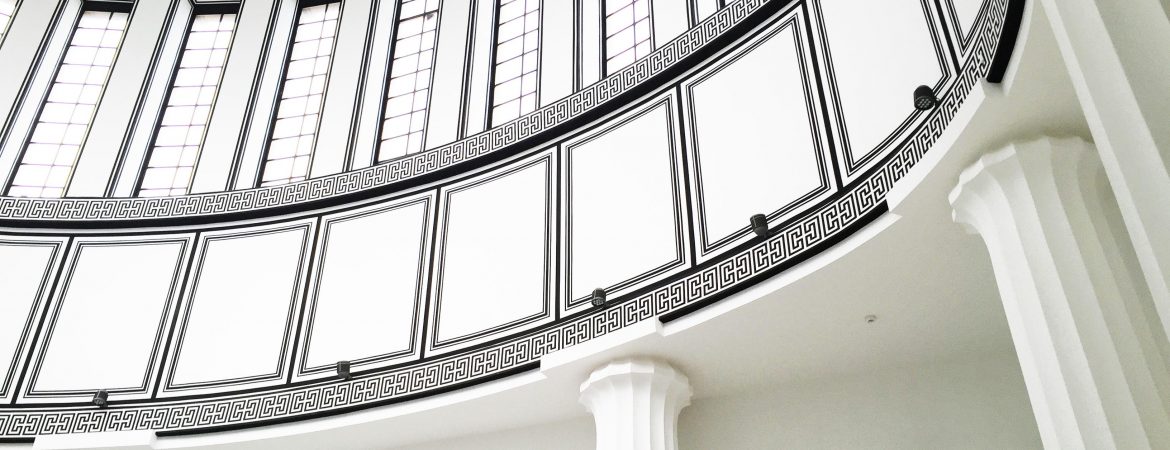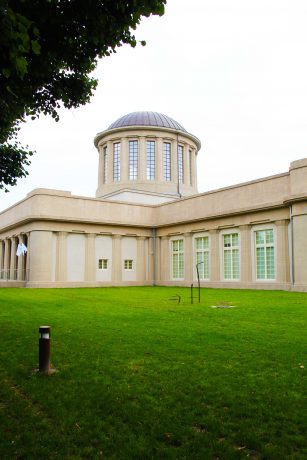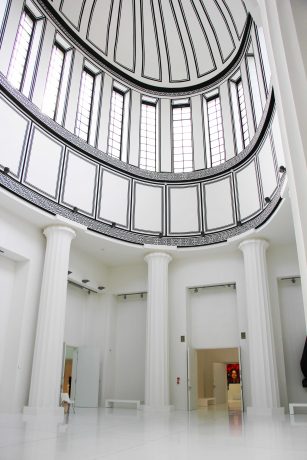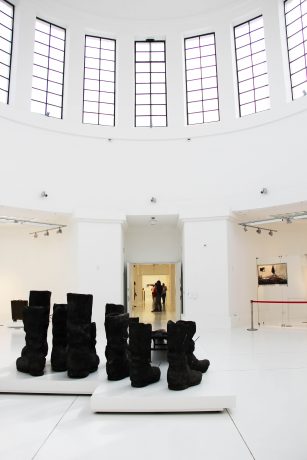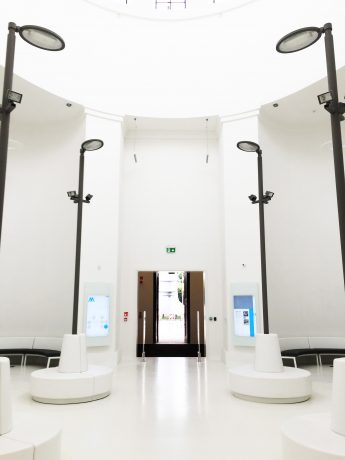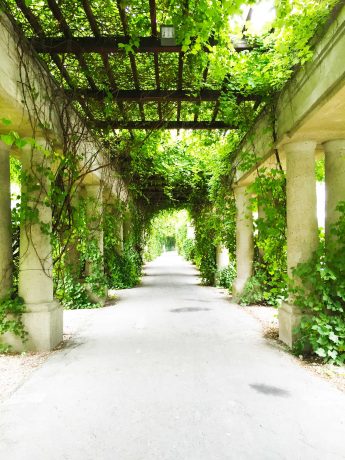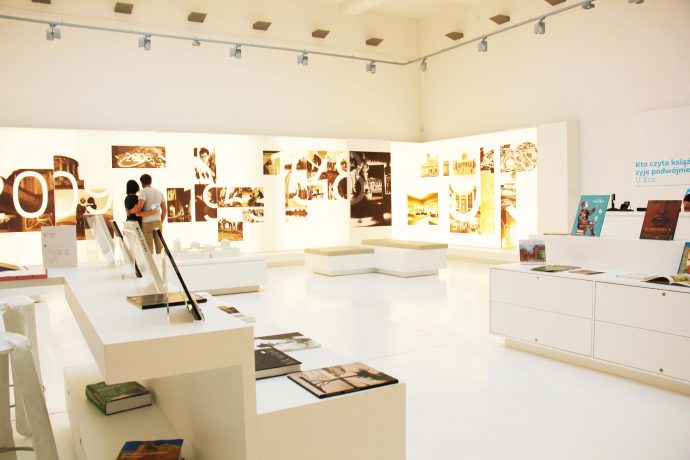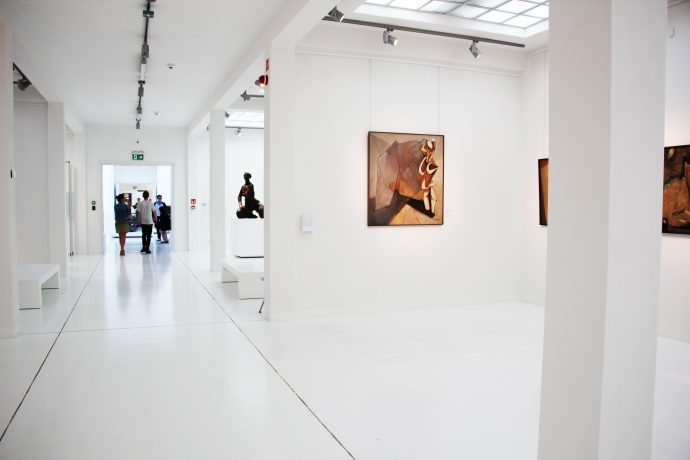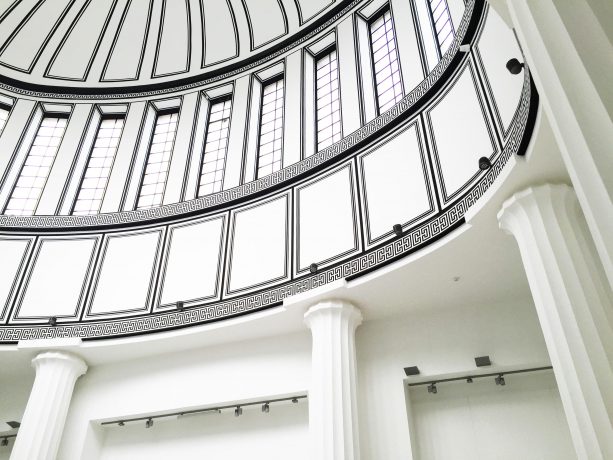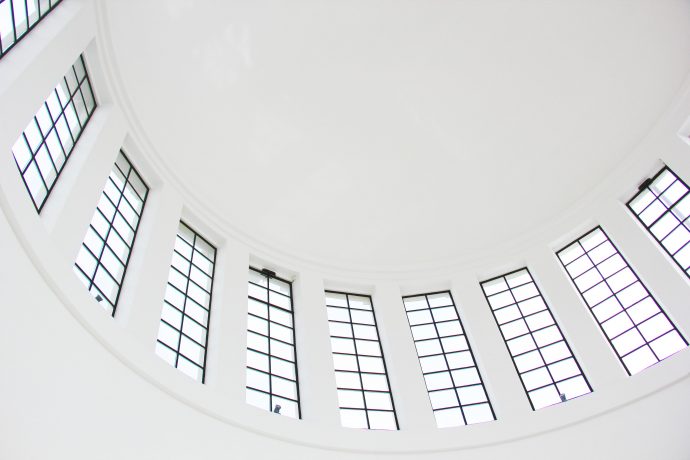The newly renovated Four Domes Pavilion opened its doors in late June 2016. I was lucky enough to be passing through Wroclaw in late July, which gave me the opportunity to visit this amazing spot. The space is one that can only be described as surreal, separate from the world outside. The contrast is so dynamic from the outside street to the interior, it is like entering another dimension. A building that is prominently known for its iconic history, the Four Domes Pavilion promises to be a space to remember.
Originally designed by Famed German Architect Hanz Poelzig, the pavilion has been re-opened as a branch of the national Museum dedicated exclusively to contemporary art. Built in 1913 as an exhibition space near Centennial Hall, the pavilion housed a historical exhibition on Prussia’s defeat of Napoleon 100 years prior. After World War 2, it was taken over by the Wroclaw Motion Picture Company as an office. Being pronounced as a UNESCO World heritage Site, the pavilion was to eventually fall into the hands of the National Museum in 2009.
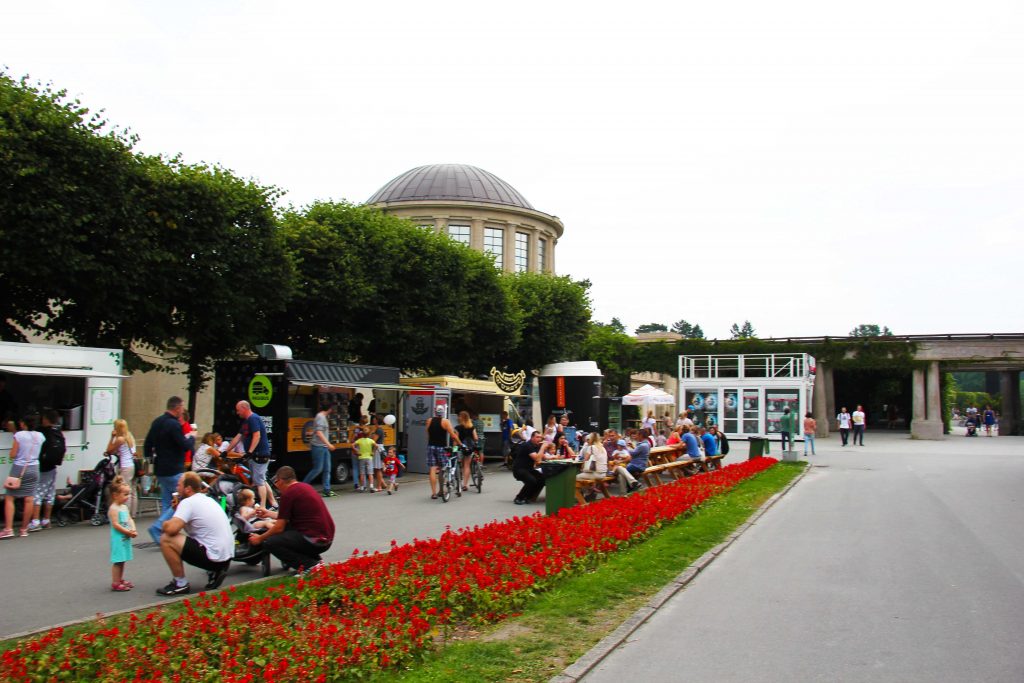
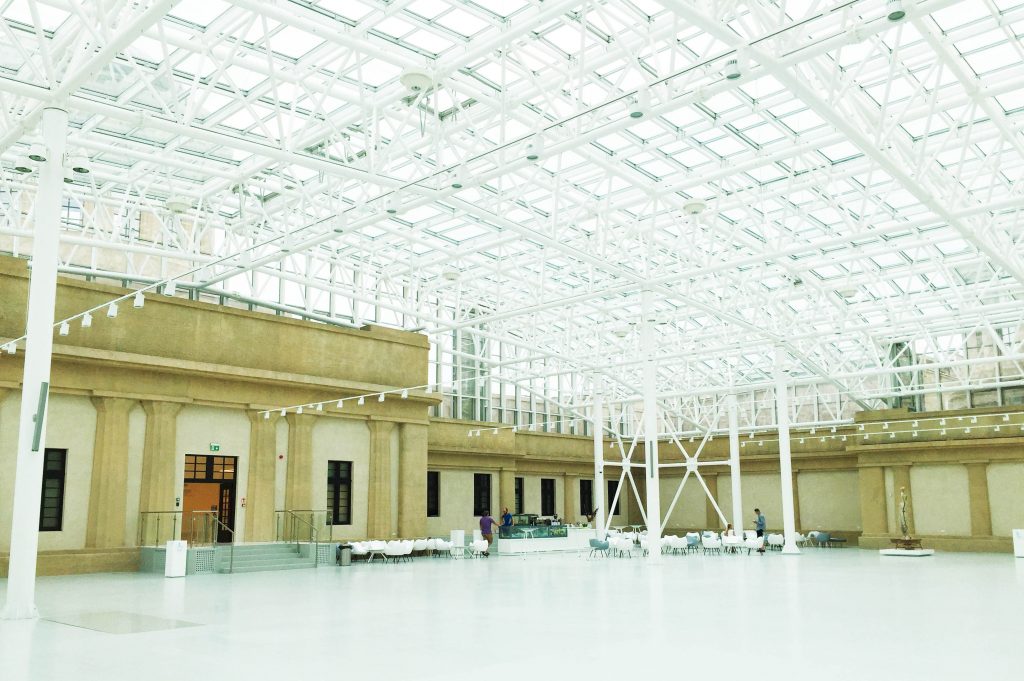
The Four Domes Pavilion is located near the historic Centennial Hall, built while the city was still under German rule and designed by Max Berg, the site is an attraction for many tourists. The surrounding space is now a public park, zoo, Japanese garden, and a pergola with a multimedia fountain. The outside space is great for a Sunday afternoon stroll in the sun. Calm and relaxing, there is also an area where many food trucks gather, many families can be found there during the day with their children. The Pavilion is one of many buildings in the area that is iconic to Wroclaw.
Restored beyond its original glory, the building interior now features a sterile minimalist motif, exhibiting exciting works by prominent 20th and 21st century Polish artist such as Magdalena Abakanowicz, Wladyslaw Hasior, Jan Lebenstein, Tadeusz Kantor, and Alina Szapocznikow. Preparation for its exhibition, however, took nine months. Promising to double the size of the collection of contemporary art existing at the National Museum at the time, Deputy Director of the National Museum in Wroclaw Barbara Banas delivered as the pavilion now also holds available exhibitions from Jozef Szajna, graphics by Józef Gielniak, Józef Panek, more etchings and works of Jan Lebenstein, as well as works of Marek Oberlander, Andrzej Wróblewski, Mieczyslaw Berman, Zdzislaw Beksinski and Jerzy Lewczynski. The collection has grown so large, that it has pushed the pavilion to become ‘a living exhibition, changing as sequentially as contemporary art does,' explained Director Banas.
Walking up to the pavilion, the building keeps its original shape, and fits its history. It blends into the park well, beige and undistracting from the surrounding park and greenery. Adjacent to Centennial Hall, the pavilion pales in comparison in both size and prominence, but doesn’t disappoint to those that enter its walls. Walking into the space, it is clear a change in the air has occurred. The climbing white walls allows for a striking impression as soon as you enter. The space begins with a mini exhibition about the history and the building itself through tablets and touch screen television sets.
Completing restorations in June 2015, Budimex finished the project in two years, of course not without its own complications. Construction workers found additional foundation had restored and painted in a color that was determined after iconographic analysis. When the renovations were finished, the building was equipped with modern installations, the windows were replaced, and the northern dome, reinforced with its original decorations restored. The interior was painted white, and the courtyard covered with a transparent ceiling to extend the exhibition space. The glass roof, supported by an enormous steel structure allowed the museum to acquire an additional 6246 square meters. The building is now also fully equipped to serve those with disabilities.
The pavilion takes visitors through a directed route, through the the gift shop first then in the exhibition halls. Each work has its own information card, which visitors can collect. The sterile halls glow with sunlight that seeps into the building through the many skylights. Upon entering one of the domes, the low to high ceiling ratio makes the dynamic contrast immediately apparent to visitors. Simply breathtaking, the dramatic beauty of the white walls and the surrounding space hits visitors like a brick wall with wonder and awe. It is easy for visitors to stay in the space for quite some time, only looking up into the domes. Situated in the middle and sides of the domes are more contemporary installation-esk pieces, inviting exploration of the space while the halls in between contain paintings.
Walking through the pavilion, visitors are simply inspired by the interior as well as the art. The Greek pillars of the domes bring the space from above to the ground, leading your eyes up to see the intricate patterns traced upon the northern dome. The last place the exhibition path takes visitors is the wide open courtyard. Simply described as the white plains of the museum, the space is one that could only be found in fashion magazines. A white that contrasts with everything else paired with it, the space does not take away from the pieces of work exhibiting within but also brings audiences to gawk in awe at the rare appreciation of minimalist space. One feels as though they are an oxymoron being in such a space: empty but full, light but heavy, quiet but loud, static but dynamic. The Four Domes Pavilion is definitely a must if you are visiting Wroclaw.
